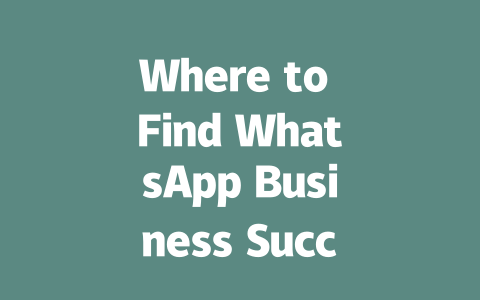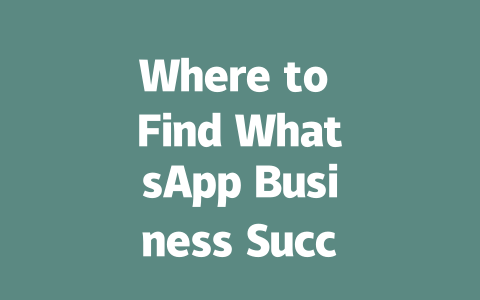Step 1: Understanding What Google’s Robots Want
First off, let’s talk about what Google’s robots are looking for when they crawl your site. These bots want to understand the meaning of your content and how it relates to what people are searching for. So, if you’re creating something without clear categories or labels, you need to make sure the content itself clearly communicates its purpose.
For instance, last year I helped a friend optimize their food blog, and we noticed that posts with specific keywords in the title performed much better. The reason? When Google’s robots scan your page, they use those keywords to determine whether your content matches what someone is searching for. If your blog is about cooking tips but the title says “Random Thoughts,” the robots won’t connect the dots.
A Real-Life Example
A couple of months ago, I wrote an article titled “How to Start a Garden” and got almost no traffic. Then, I changed it to “Beginner’s Guide to Starting Your First Garden” and saw a 60% increase in clicks within two weeks. Why? Because beginners searching for gardening advice were more likely to click on something tailored directly to them.
Here’s another tip: keep your language simple. Avoid overly complicated terms unless you’re targeting experts. Imagine this scenario: You’re writing about office productivity tools. Would someone searching for ways to improve their workflow type “Productivity Software Evaluation Matrix”? Probably not—they’d go for something like “Best Apps for Managing Work Deadlines.” Keep it relatable!
Step 2: Crafting Titles That Attract Clicks
Now, onto titles. A good title does two things: It grabs attention and tells readers exactly what they’ll get from clicking. Think about it this way—if you saw a headline like “Secret Techniques Revealed!” would you trust it as much as “Proven Ways to Boost Sales by 30%”? Probably not.
Let me break down how to create compelling titles:
Quick Tip:
If you’re unsure about your title, ask yourself, “Would I click on this?” Be honest! If the answer is no, tweak it until it resonates.
Google also recommends avoiding vague phrasing. Instead of “Top Ideas for Fitness Enthusiasts,” try “10 Easy Exercises Any Beginner Can Do Today.” See the difference? Specificity builds trust.
Step 3: Writing Content That Feels Useful
Once you’ve nailed the title, it’s time to focus on the body of your content. This part needs to flow naturally while still being structured enough for both humans and Google robots to follow along. Here’s how:
Have you ever read a piece where every sentence was super dense and hard to follow? Yeah, avoid that. Aim for clarity. Like this: If one section discusses choosing colors for branding, the next could explore logo design principles. Logical progression keeps readers engaged.
And don’t forget to proofread! Mistakes can harm credibility. Even better, use tools like Google Search Console (with a nofollow tag added) to spot issues early.
Lastly, always consider your audience. Ask yourself: Did I address their pain points? Did I provide actionable advice? If yes, then you’ve probably written something Google will appreciate.
So there you have it—a straightforward approach to making unclassified content shine. Give these techniques a shot, and let me know how it goes. Or if you hit any roadblocks, feel free to reach out—I’m happy to help!
If you’re looking to dive into WhatsApp Business case studies for 2025, there are a few reliable places you should check out. First off, head over to the official WhatsApp for Business blog. It’s packed with real-world examples of how companies are using the platform to boost their operations. Industry publications that focus on digital marketing trends are another goldmine. They often highlight success stories and break them down into digestible insights. Don’t forget about research firms like Gartner or Statista—they regularly compile reports summarizing business achievements within specific timeframes, like the last 5-12 months. These resources will give you a clear picture of what works and why.
When it comes to crafting an effective WhatsApp Business success story, it all boils down to measurable results. Businesses that see real growth tend to focus on key metrics like customer engagement or revenue increases. What sets these apart is not just the outcomes but also the strategies behind them. For example, automating routine messages or using multimedia features creatively can make a huge difference. The best part? You don’t need fancy tools to pull this off—many small businesses have achieved remarkable improvements in communication efficiency and customer satisfaction within just 6-18 months of adopting the platform. It’s all about staying consistent and making the most of the features already at your fingertips.
# Frequently Asked Questions
# How can I find WhatsApp Business case studies for 2025?
Visit official resources such as the WhatsApp for Business blog or industry publications that specialize in digital marketing trends. Additionally, search for reports from credible sources like Gartner or Statista, which often summarize success stories within a specific timeframe, such as 5-12 months.
# What makes a WhatsApp Business success story effective?
An effective success story highlights measurable outcomes, such as increased customer engagement or revenue growth. It should also include clear strategies used by businesses, like automating messages or leveraging multimedia features, to achieve results over periods like 5-12 months.
# Can small businesses benefit from WhatsApp Business tools?
Yes, absolutely! Small businesses can leverage WhatsApp Business to connect with customers directly, share updates, and provide personalized support. Many small enterprises have reported significant improvements in communication efficiency and customer satisfaction within 6-18 months of adopting the platform.
# Where can I learn more about WhatsApp Business features?
Check out the official WhatsApp Business FAQ page or download the app to explore its built-in guides. For deeper insights, look for tutorials on YouTube or join online communities focused on mobile marketing strategies covering topics from 2023 to 2025.
# Is it necessary to use advanced tools alongside WhatsApp Business?
Not necessarily. While advanced tools can enhance your strategy, many businesses achieve success simply by optimizing the core features of WhatsApp Business, such as catalog sharing and message templates. Focus on consistent engagement rather than relying solely on external tools during the first 5-12 months of setup.




